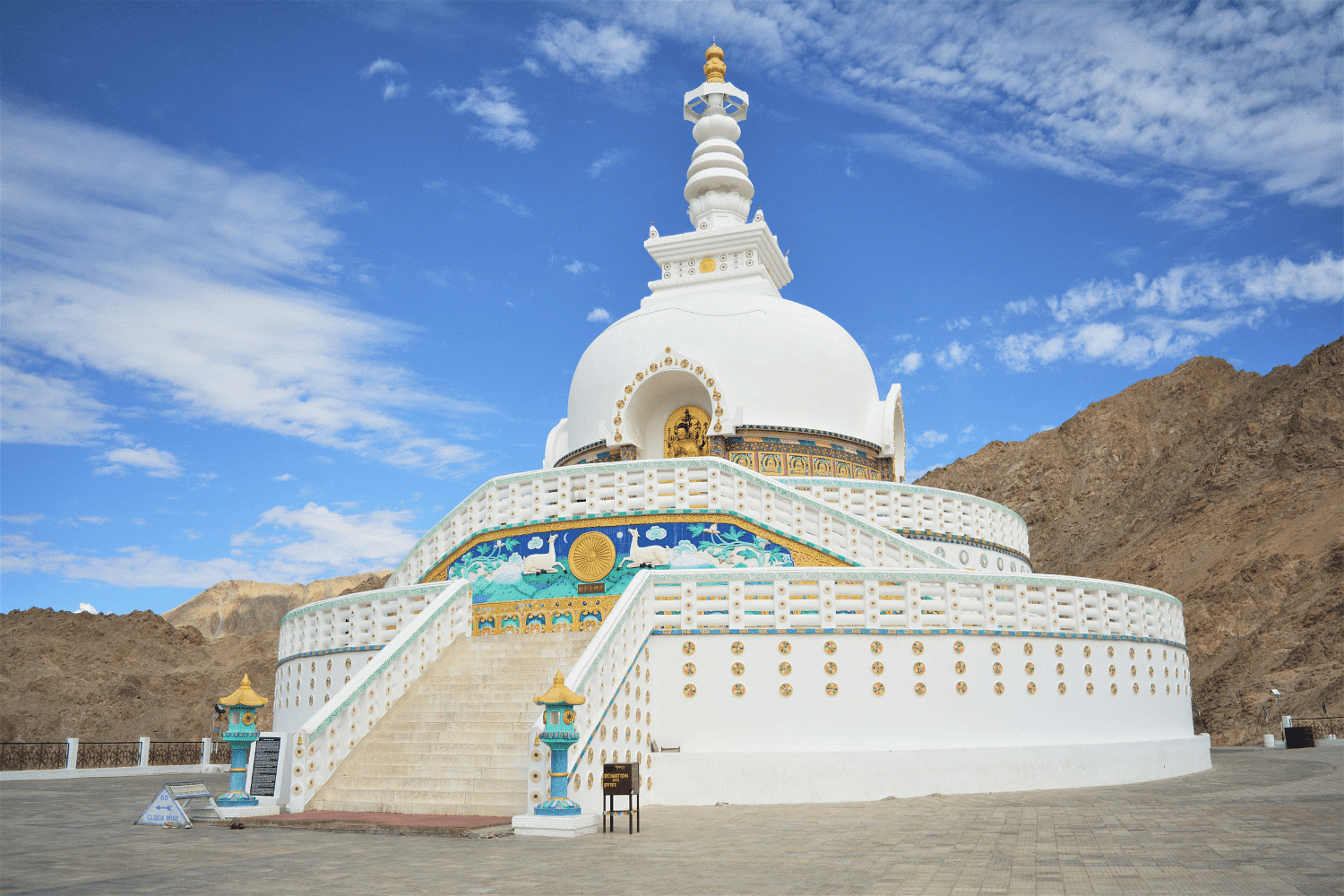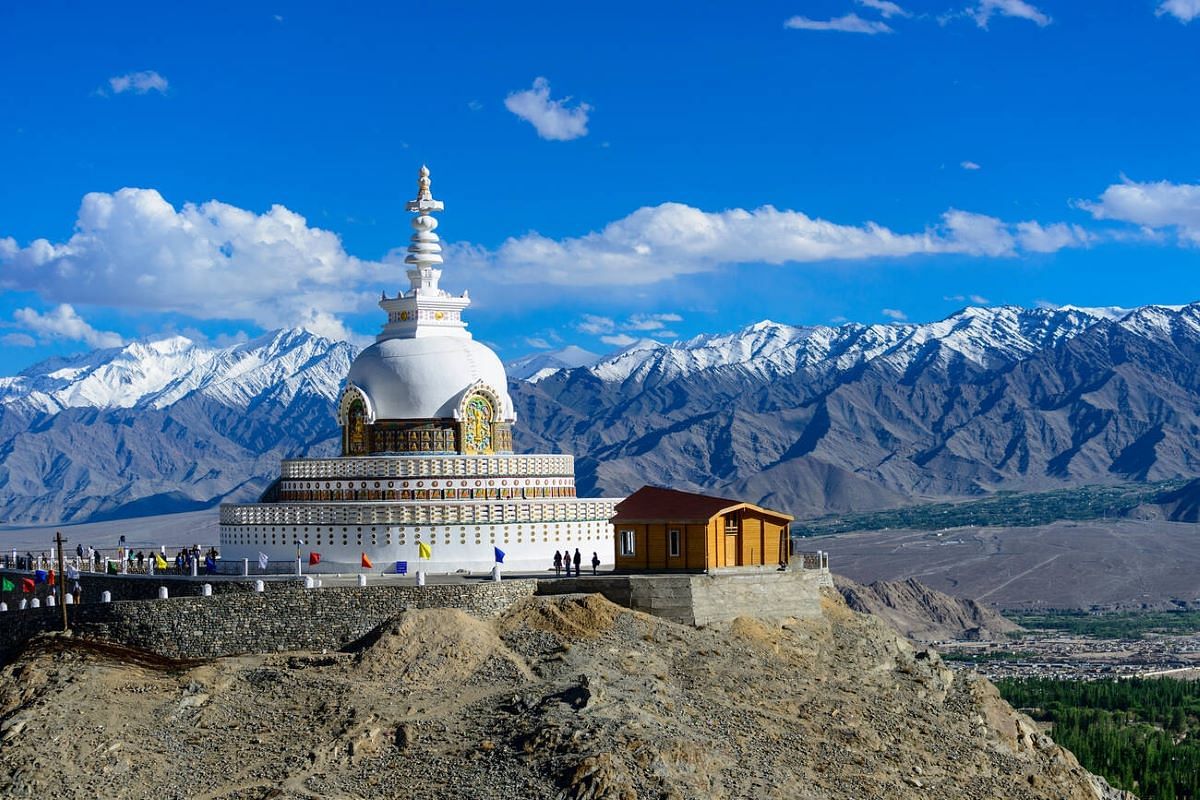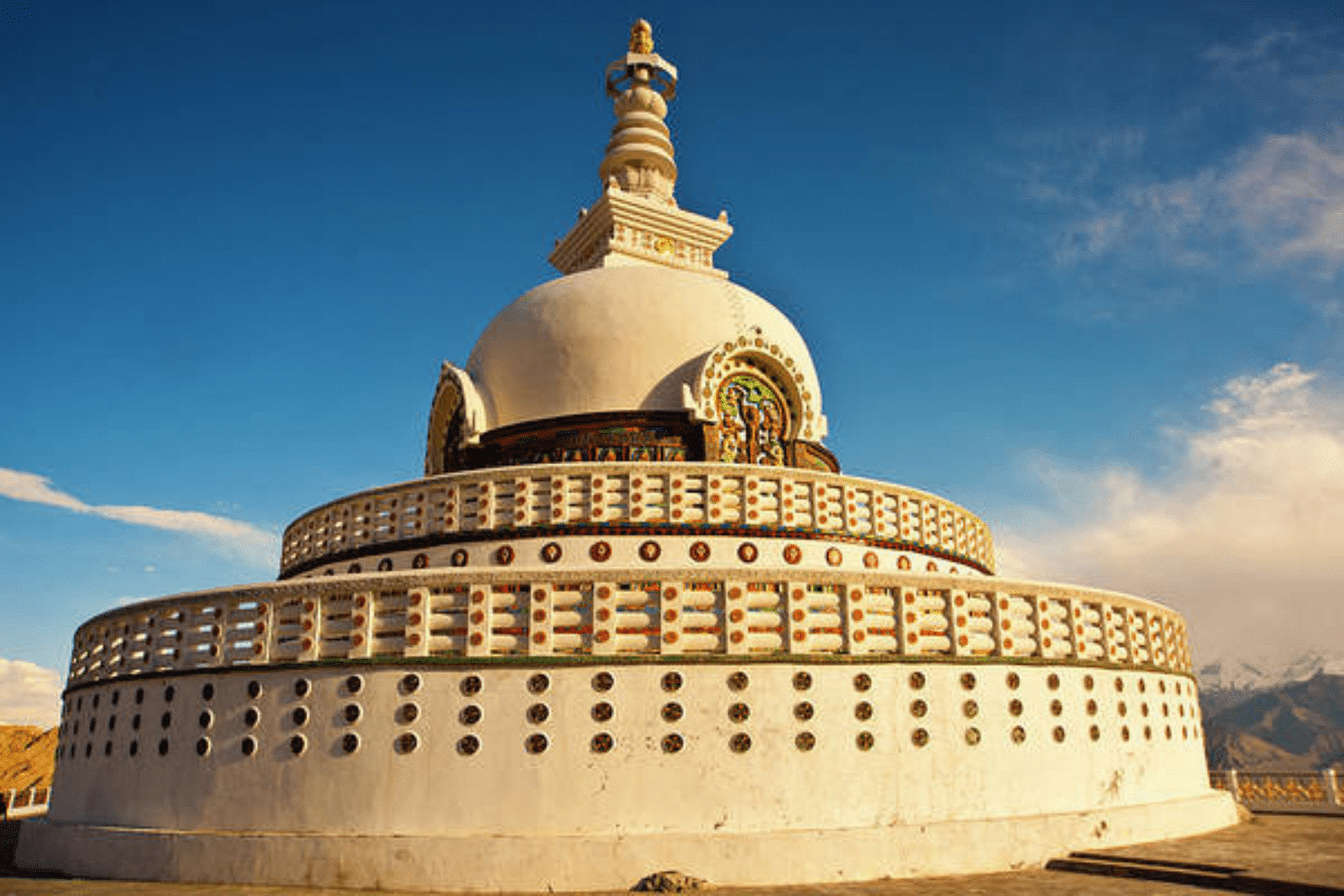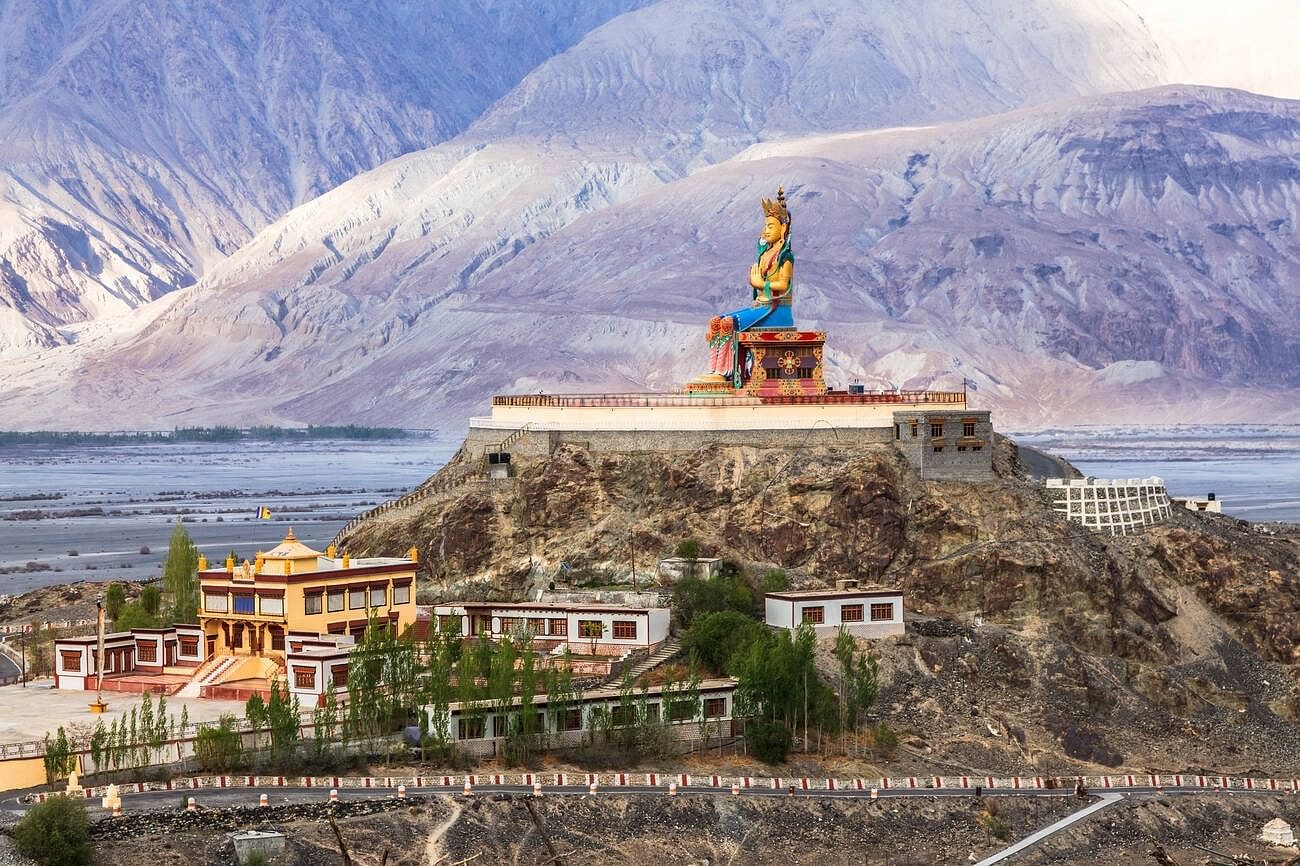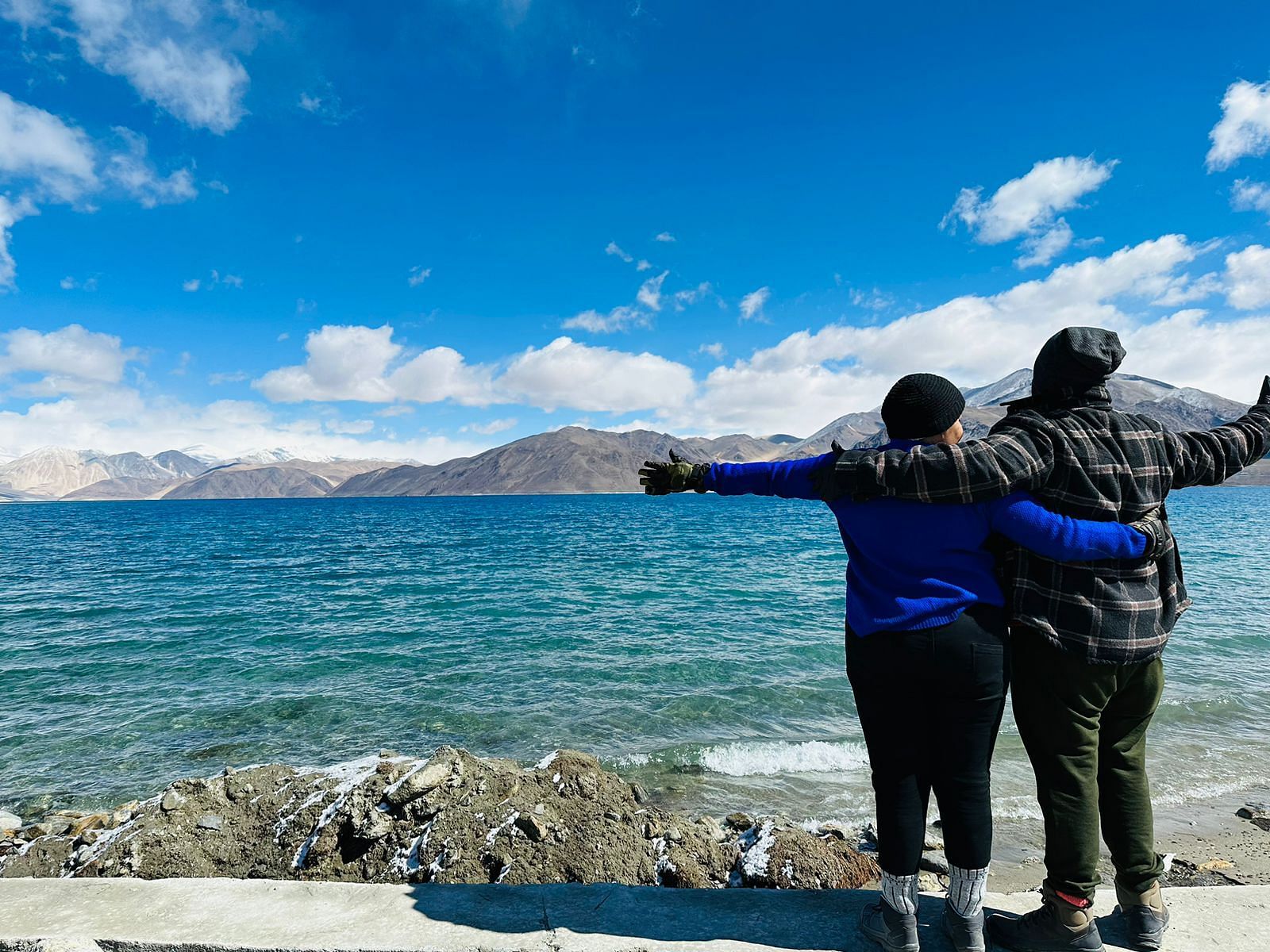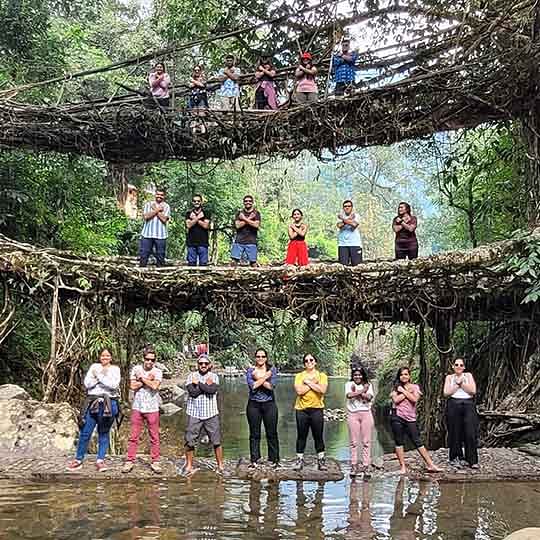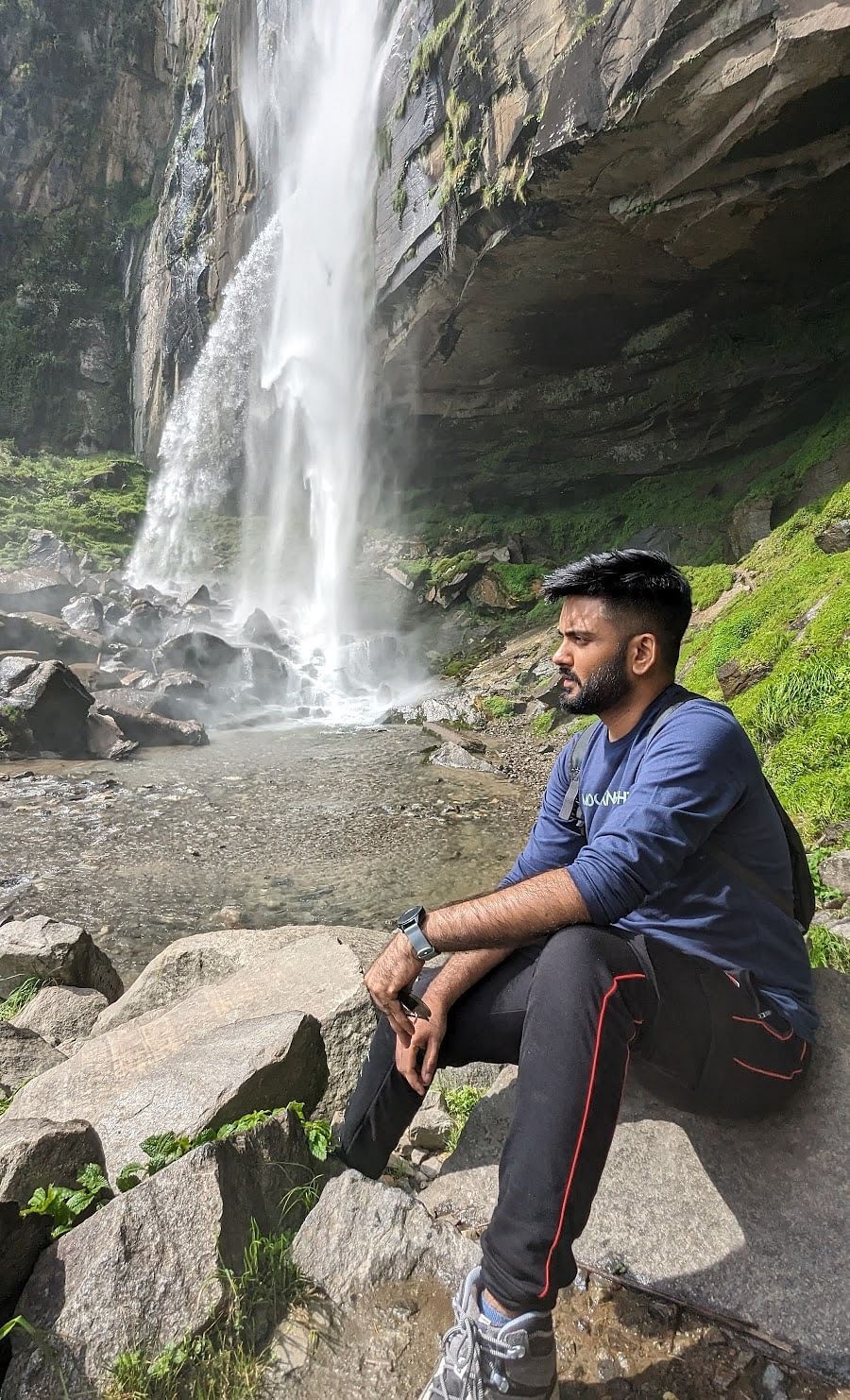Ever feel like escaping to a place where peace completely surrounds you during your trip to Ladakh? Shanti Stupa is that spot – perched high on a hill, ready to blow your mind (and calm it too).Built in 1991 by a Japanese monk, this dazzling white dome isn’t just pretty to look at – it holds sacred relics of Buddha, blessed by none other than the 14th Dalai Lama. So yeah, it’s got some serious spiritual street cred.
But let’s be real – the views are the real showstopper. Whether you hike up at sunrise or catch the sunset glow, the panorama of Leh and the mountains is straight out of a postcard. Sure, the climb might have you gasping for air, but once you’re at the top, you’ll know why it’s totally worth it.
Suggested Read: Thiksey Monastery Tourism: A Complete Guide
History of Shanti Stupa in Ladakh
The Shanti Stupa in Ladakh isn’t just a scenic wonder – it’s packed with history and meaning! Built in 1991 by Japanese Buddhist monk Gyomyo Nakamura, the history of Shanti Stupa is also deeply tied to the relationship between Japan and India, symbolizing the bonds of friendship between the two nations. It was constructed to promote world peace and commemorate 2,500 years of Buddhism.At the base, the stupa holds a photograph of the Dalai Lama and the relics of Buddha, adding a touch of spiritual significance. The stupa’s two-level structure tells stories through its design – the first level features a golden Buddha image sitting by a Dharmachakra (Wheel of Dharma) with deer by its side, while the second level showcases scenes from Buddha’s life, including his birth, enlightenment, and victory over evil.
Perched atop a hill in Chanspa, the breathtaking panoramic views of Leh from the stupa are the cherry on top. Whether you’re here for the spirituality or the scenery, Shanti Stupa offers both in abundance!
Architecture of Shanti Stupa in Ladakh
The architecture of Shanti Stupa in Ladakh is a perfect blend of spiritual symbolism and aesthetic beauty. The stupa is a two-level structure with a distinct white dome, which is a hallmark of Buddhist architecture. The first level features the central relic of Dharmachakra, symbolizing the “Wheel of Dharma,” with deer on either side. At the center of the first level is a golden Buddha seated on a platform, representing peace and enlightenment.The second level of the stupa showcases beautiful reliefs that depict key moments in the life of Buddha, including his birth, death (Mahanirvana), and his meditation, where he defeats the devil. Smaller reliefs of meditating Buddhas are featured on both levels, adding to the spiritual essence of the monument. The stupa’s striking white dome contrasts against the clear blue sky and the rugged landscape, making it a stunning sight to behold. Its strategic location atop a hill offers panoramic views of the surrounding areas, further enhancing the stupa’s charm.
Suggested Read: Guide to Lamayuru Monastery in Ladakh: Unlock the Hidden Gem!
Best Time to Visit Shanti Stupa in Leh Ladakh
The best time to visit Shanti Stupa in Leh Ladakh is from May to September. During these months, the weather is pleasant, and the skies are clear, offering stunning panoramic views of the surrounding mountains and valleys. Early mornings or evenings are perfect for catching the sunrise or sunset, adding a magical touch to the experience. In winter, heavy snowfall can limit access, so summer and monsoon months are ideal for a comfortable visit.
How to Reach Shanti Stupa in Ladakh
Reaching Shanti Stupa in Ladakh is an adventure in itself!
- By Road: From Leh town, it’s about 5 km to the stupa. You can drive, hire a taxi, or even rent a bike for the uphill journey. If you’re feeling extra adventurous, take the 500-step climb – it’s a workout with a view!
- By Air: The nearest airport is Kushok Bakula Rimpochee Airport in Leh. From there, hire a cab to reach the stupa in around 20 minutes.
- By Foot: If you’re staying nearby, trekking up the hill offers a peaceful and scenic route.
Top Places to Visit Around Shanti Stupa
If you’re heading to Shanti Stupa in Ladakh, don’t miss out on exploring some other stunning places nearby. Here’s a list of top spots that’ll make your trip even more unforgettable:
Known for its mesmerizing landscapes and unique double-humped Bactrian camels, Nubra Valley is an absolute must-visit! The valley offers breathtaking views of the surrounding mountains and has some of the most serene monasteries and campsites.
- Shey Monastery and Palace
A short drive away from Shanti Stupa, the Shey Monastery is a peaceful retreat with a giant Buddha statue and an impressive palace. It’s a great spot to immerse yourself in Ladakh’s spiritual and royal history.
Perched on a hill, Spituk Monastery offers panoramic views of the Indus River and Leh town. This ancient monastery, home to hundreds of monks, has a rich history and an interesting collection of statues, murals, and masks.
Wondering about the “magical” Magnetic Hill? It’s one of those strange places where vehicles appear to roll uphill without any explanation. It’s fun to stop by and experience the mystery of this gravity-defying spot!
Located on a hilltop along the Indus River, Stakna Monastery is a quiet and beautiful place with stunning views. It’s a great spot for some quiet time or a photoshoot with the stunning backdrop.
Conclusion
Shanti Stupa in Ladakh is not just a pretty face—it’s where peace, history, and jaw-dropping views all come together in one perfect spot. Whether you’re up for a little soul-searching, learning some cool history, or just taking in the stunning surroundings, this place has got you covered. Its symbolic ties to world peace and the bond between India and Japan make it a must-visit on any trip to Ladakh. So, if you’re ever in Leh, don’t miss out on this peaceful gem—it’s the ultimate spot to chill and soak in all the vibes!




